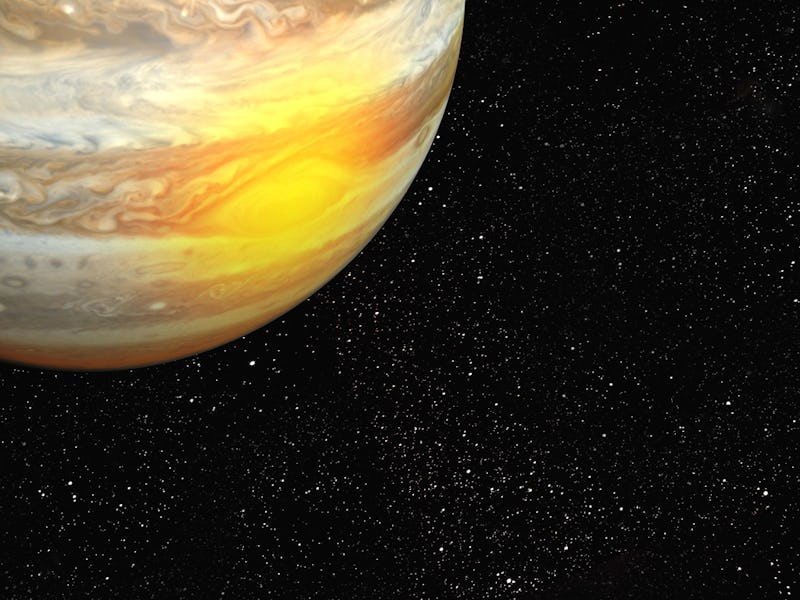Gravity Waves From Jupiter's Great Red Spot Are Heating the Planet
The Great Red Spot is so big it storms gravity waves.

Gravity waves from Jupiter’s Great Red Spot are heating Jupiter’s atmosphere, 500 miles above its clouds.
Researchers from Boston University reported this discovery in Nature on Wednesday. It is the first evidence that there is a connection between the layers of Jupiter’s atmosphere, leading to a planet-wide heating system. Understanding how the heating of Jupiter works can help explain the atmospheres of other gas giants in the solar system.
James O’Donoghue, a space physics postdoc and his team were trying to understand how Jupiter’s upper atmosphere is roughly the same temperature as the Earth’s — despite being 460 million miles farther from the sun. While looking at the planet using infrared, they discovered that the upper atmosphere over the Red Spot was hundreds of degrees warmer than the rest of the planet.
The Great Red Spot has been storming across Jupiter’s surface for roughly 350 years, as long as astronomers have been able to look at the planet. The largest storm in our solar system, it is the size of three Earths side by side and it can take six days for winds to spin once around the edge of the storm. It thunders along the equator, and the massive blasts of sound waves and gravity waves created by the storm are likely slamming into each other hundreds of miles above the storm are likely causing the heating, says O’Donoghue.
Artist's interpretation of how the gravity and sound waves move out of the storm to create heat over the Great Red Spot.
Although there have been models that predicted movement of heat between the layers of Jupiter’s atmosphere, it has never been observed until now. Most of the gas giants in the solar system are also much warmer that researchers would expect from solar heating alone, so this mechanism might be at play in planets like Saturn, Uranus, and Neptune — and potentially even gas giant exoplanets.
Thanks to the Juno probe, researchers will soon have more data to examine the atmospheric heating. Juno has a gravity wave detector onboard, which will be extremely useful in understanding how the storm is moving the heat into the upper atmosphere. Over the next few years, Juno will be gathering and returning detailed infrared data, and should be able to image the cycling of heat across the planet.